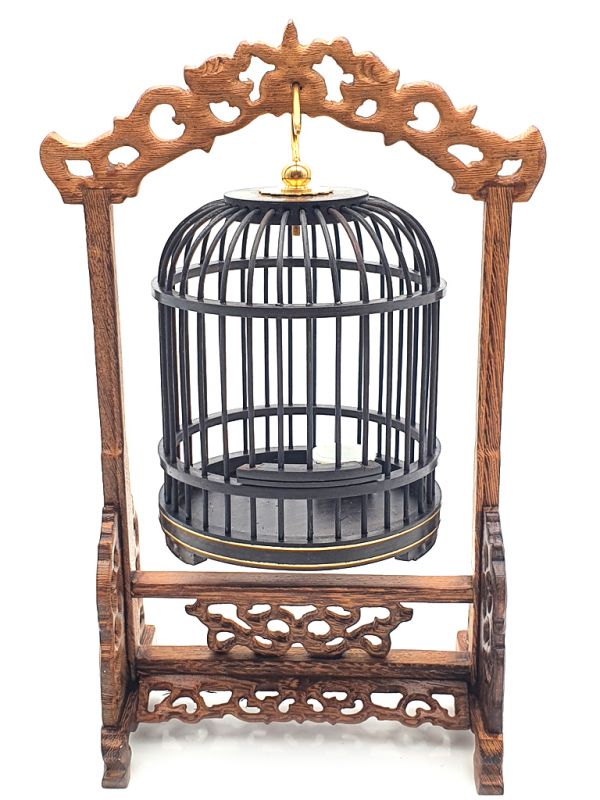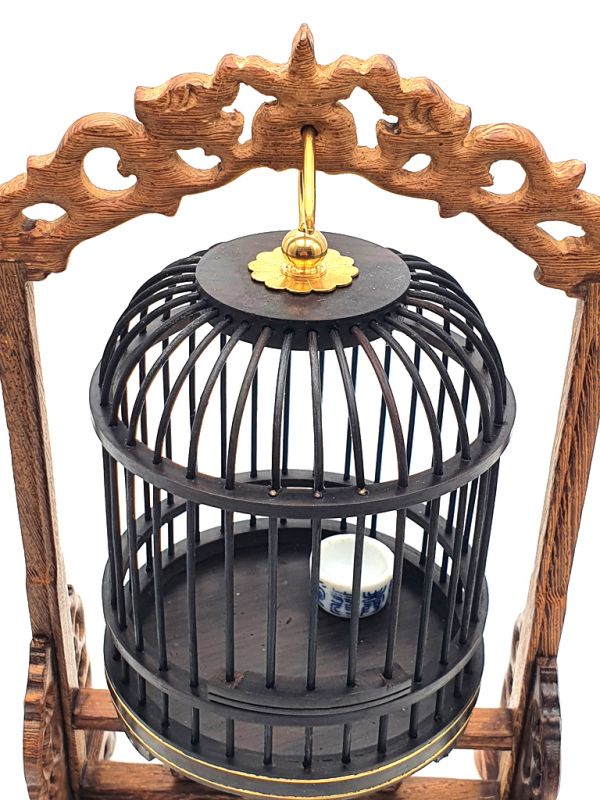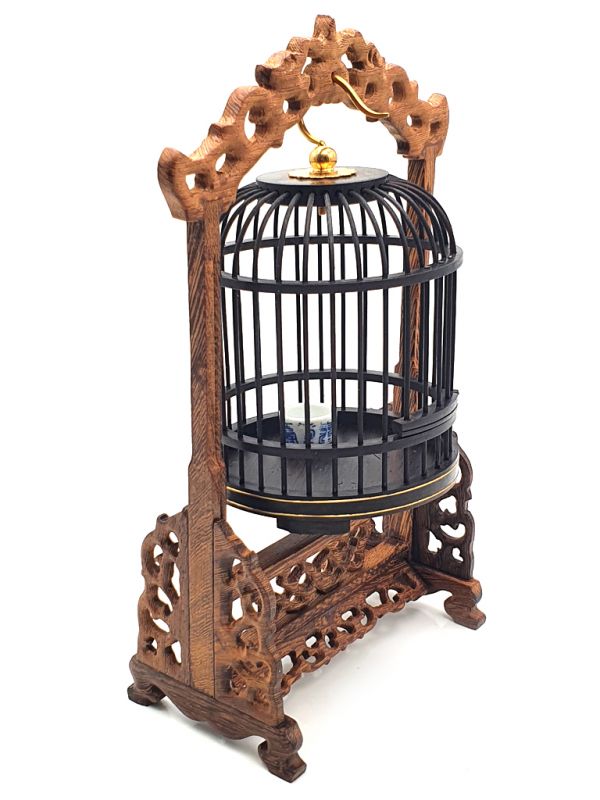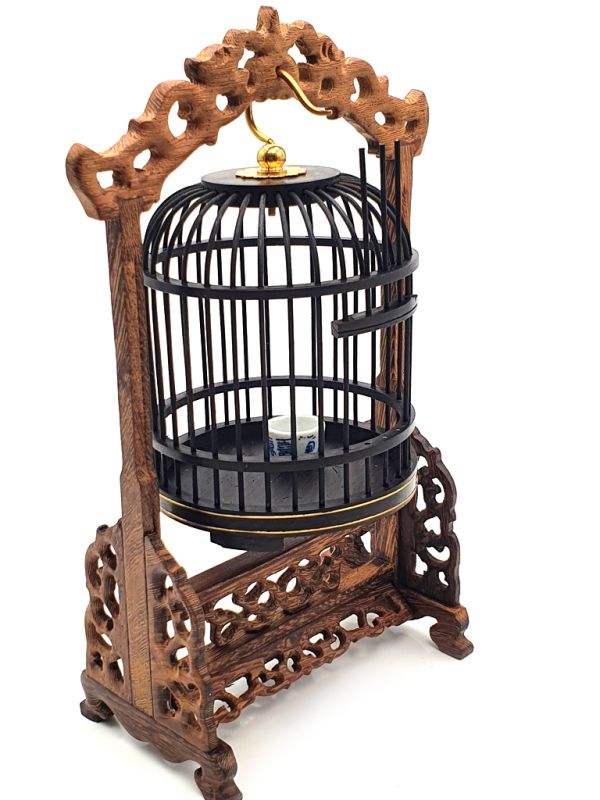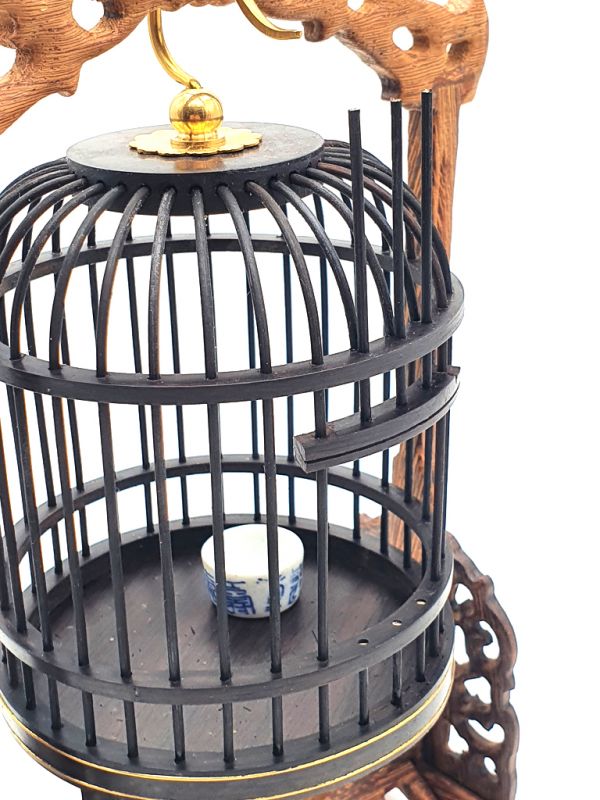Chinese Wooden Cricket Cage - Ebony wood - Cage with wooden support
Chinese wooden cricket cage:
- This cricket cage is entirely made of wood (bamboo), engraved and cut by hand. Cricket cages are still used in China to keep insects or to decorate houses. They are also increasingly popular in the West among collectors or among people who appreciate traditional Chinese crafts.
- This cage allows the captivity of crickets. To introduce a cricket in this cage, all you have to do is lift the small front hatch, made with 5 integral bars, sliding from top to bottom.
- There is also a small porcelain feeder in this cage.
- It is a dating from the end of the twentieth century (about 20-30 years).
History: Crickets in China:
- Crickets occupy a very important place in Chinese tradition, they symbolize happiness and longevity. They are generally bred for combat and / or to listen to their song. In China, this insect is considered a good luck charm. Crickets are fast, careful and discreet, they like hot places and they are vegetarians. The affection of the Chinese for this insect has prompted artisans in the country to make cricket cages that are functional and aesthetic.
- In the Tang Dynasty, every year the ladies of the Imperial Palace would catch crickets and lock them in small cages made of rattan, ivory, bone, porcelain or gold so that they could listen to their chirping day and night. The cages were placed near their beds, as the song of the crickets helped them fall asleep. Chinese scholars also appreciated these insects, so much so that a book called "The Book of the Cricket" explaining how to deal with them and how to cure them in case of battle injury or illness was written in the 17th century.
- Under the Song dynasty, the Chinese no longer raised crickets just for their chirping, but mainly to make them fight (cricket battles). These fights were very popular among the Chinese people as well as in the Imperial Court. Indeed, many emperors were passionate about cricket battles, they organized them themselves and had the best fighters in the country sent. Virtually all families in Beijing kept crickets, for personal use or for trading. Collection began at the end of the summer and the most prized specimens were the largest, considered to be the most combat-capable because of their supposed strength. They thus had a great commercial value in the markets of the capital in winter.
- So the Chinese used to keep crickets to fight. They used large enough terracotta basins or pots as a fighting area. A referee was assigned to weigh the crickets, to place them in the arena and to declare the winner. The fighters were stimulated before the clash by wands with bristles and a bait placed in the center of the arena to bring them closer. The crickets, once close to each other, assess each other with their antennae, catch each other with their mandibles and then engage in melee. The winner is the cricket that remains in the arena while its opponent flees. The fights took place in parks, in public gardens or in markets. In order to transport crickets, the Chinese used cages which could be made of wood, bone or metal. Following the ban on gambling in China, this tradition became scarce in the mid-20th century, but remains very popular with the country's elderly.











